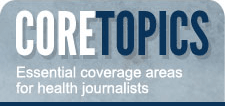One of the questions that I got from colleagues after AHCJ’s post-Supreme Court webcast was about the cutoff for expanded Medicaid (in states that opt in to Medicaid expansion). The health law says it’s open to people or families with income up to 133 percent of the federal poverty level. Yet some experts and advocates talk about 138 percent. Which is right?
Both, sort of.
The Affordable Care Act certainly states 133 and that’s the number you will commonly see, in the media and in the policy world.
But there is some small print. The law specifies that people qualify with “modified adjusted gross income” (MAGI) at or below 133 percent FPL. But there is a provision in the law that, in effect, adjusts the level to a de facto 138 percent. If you are a state official, budgeting and planning and figuring out who is eligible and who isn’t, this is important. If you are a journalist writing about it, you can probably stick with 133. (I do.)
Keep in mind that for an individual or family, it’s not a big difference in dollar terms. For one person, in 2012, 133 percent of the poverty level is $14,856 – and going up to 138 percent is less than $1 a day more. For a family of four, FPL is $30,657 -and going up to 138 percent is less than $2 a day more for the family.
The far more important difference is that Medicaid can cover 16 million to 17 million more people – and different people. Medicaid is currently largely for very poor children, some of their parents, some disabled people and a big chunk of the nursing home population. Now – at least in states that proceed with the expansion – it’s open to low-income people, be it 133 percent or 138 percent. They don’t have to be parents. They don’t have to be disabled. They just have to be poor and uninsured.
Joanne Kenen (@JoanneKenen) is AHCJ’s health reform topic leader. If you have questions or suggestions for future resources, please send them to joanne@healthjournalism.org.









